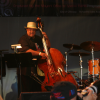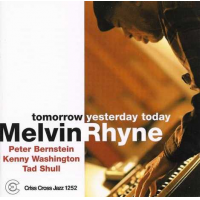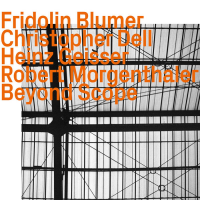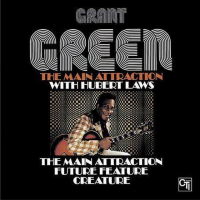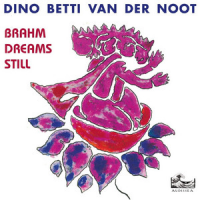Home » Jazz Articles » Liner Notes » Nicole Mitchell and Michel Edelin: The Ethiopian Princes...
Nicole Mitchell and Michel Edelin: The Ethiopian Princess Meets the Tantric Priest
So The Ethiopian Princess Meets the Tantric Priest demonstrates what happens when opposite poles touch. Like a marvel of physics, the reverberations generate something new: in this case, previously unimagined dimensions of pure song. The sonic spheres the Princess and the Priest conjure—with wonderful support from bassist/pianist Harrison Bankhead and drummer Hamid Drake of Mitchell's Indigo Trio—are akin to what's born by a spirit of the air in congress with a guardian of the earth.
Nicole Mitchell is not by birth Ethiopian. Originally from upstate New York, transplanted as a child to southern California, she has emerged since the release of her first album in 2001 as a virtuosic, innovative instrumentalist and ambitious, ever-more accomplished composer, based in Chicago and connected to the Association for the Advancement of Creative Musicians (AACM). She has mastered multi-phonics (the production of two tones simultaneously), articulation (hear her sure attack and precise intonation of every note, no matter how fast) and phrasing (how long her lines are! And how varied!) to advance what a winds and reeds player steeped in Western traditions but not bound by them might do. It is as if Mitchell listens to the birds and responds joyously, with adroit skill and intelligence.
Michel Edelin is not, to my knowledge, a practitioner of Tantric Buddhism, the esoteric religious strain that emerged from northeastern India (Bengal) in the third century A.D. with the goal of transcending conventional truths—consensus reality—in order to awaken enlightened minds to the ultimate truth, the universal reality. However, biographical information about Edelin beyond his history of performances, ensemble participation, recordings since 1990 and production of "Ze Blue Note," opera-theater for children and jazz quintet, is not readily available. One simply knows upon hearing his music that he has extraordinarily deep understanding of how to convey feelings through sound.
A Parisian, reportedly a self-taught flutist and a man of meticulous habits, Edelin like Mitchell focuses on extending the expressive possibilities of his instrument. He grounds the flute in the most human aspects of sonic communication, taking off from the huskiness and mutability of the voice, its pause, slurs, buzzes, quavers of doubt and whispers of secrets. His music, as I've discovered through his 2000 duo album with bassist Francois Mechali Le Chant des Dionysies and his 2009 RogueArt album Kuntu, always exists beyond convention. He deliberately eludes every pre-supposition and expectation to assert personal and incontrovertible truths with a cool perspective and empathetic warmth.
The touchstones the Princess and the Priest share are evident from the opening of this album. Mitchell's composition "Top Secret" is not so secretly to anyone with ears indebted to the precedents of Eric Dolphy, the breakthrough flutist of the early 1960s. Nicole's solo over Bankhead's sturdy, fast-walking bass and Drake's splashy, propulsive drumming echoes Dolphy's characteristic compression of harmonic twists and turns within choruses of fixed length. Then Michel follows, abjuring the measurement of time or direct reference to the track's theme. He employs pitchless blowing, whistle tones, lip trills, microtonal melisma and his own style of multiphonics in a dramatic yet quiet narrative statement that follows no logic but its own. Bankhead, also playing outside of time, matches Edelin with his arco bass before reprising the quick tempo with Drake; Nicole and Michel join in tight unison.
"Inside the Earth," also credited to Mitchell, juxtaposes the two flutists' approaches without bassist and drummer. She and Edelin, in play, assume full liberties. Rather than compete, they converse, reflect, diverge and eventually return, fading into the silence from which all sound springs.
"Derives" is Edelin's writing. While the score calls for the two flutes to impose themselves over the flowing rhythm Bankhead and Drake provide, all four musicians are given equal powers and responsibilities. Michel hovers below and sometimes rises to engage Nicole's flurries; their flutes dance as a pair, confident of being able to move as they so desire without losing the piece's through-line. In "Wind Current," a sturdy bass ostinato underlies composer Mitchell's otherwise free flight and Edelin's lower register forays. The two are further distinguished when Nicole plays piccolo in tart middle and ending unison episodes with Michel.
Edelin's "Call Back" is tuneful to start, but as he extemporizes in duo with Hamid Drake he leaves the line that launched him and ends up, unpredictably, at a march- like rhythm. In the album's collectively created title track, Edelin begins by sounding plaintive and natural; when Mitchell enters, Bankhead takes up his bow, Drake gets looser and the entire ensemble thickens. Is someone singing? Aren't they all singing? The quartet's collective improv unfolds organically, as music must have before there were scores or established forms.
"Amber Sunset" represents Nicole Mitchell at her best and Michel Edelin in complementary comment. Sweeping through the flute's entire range, she finds new steps where there had been none—and when the Priest enters, energized in the wake of the Princess, she takes up her piccolo to dart and soar above him. Their togetherness in the brief coda is triumphant. After it, "Return of the Sun" by Harrison Bankhead (on which he plays piano) is a balm.
So much beautiful and detailed music is involved when The Ethiopian Princess Meets The Tantric Priest that multiple listenings are required to grasp it all, and each of those listenings is revelatory. Aficionados of the flute, of spontaneous artistic interactions, of grace and beauty will be amply rewarded. This music will thrill anyone who revels in the elaborations of melody. It all reminds us that breath, lips, tongue and fingers can be at the service of mind and heart. The Princess and the Priest, with their attendant bassist Bishop and Shaman drummer, ennoble the subtly structured, infinitely expansive music we call jazz.
Liner Notes copyright © 2026 Howard Mandel.
The Ethiopian Princess Meets the Tantric Priest can be purchased here.
Contact Howard Mandel at All About Jazz.
Howard is a Chicago-born writer, editor, author, arts reporter for National Public Radio, consultant and videographer. Visit Howard at howardmandel.com.
Track Listing
Top Secret; Inside the Earth; Dérives; Wind Current; Call Back; The Ethiopian Princess Meets the Tantric Priest; Ambre Sunset; Return of the Sun.
Personnel
Album information
Title: The Ethiopian Princess Meets the Tantric Priest | Year Released: 2012 | Record Label: Rogue Art
Tags
PREVIOUS / NEXT
Nicole Mitchell Concerts
Support All About Jazz
 All About Jazz has been a pillar of jazz since 1995, championing it as an art form and, more importantly, supporting the musicians who make it. Our enduring commitment has made "AAJ" one of the most culturally important websites of its kind, read by hundreds of thousands of fans, musicians and industry figures every month.
All About Jazz has been a pillar of jazz since 1995, championing it as an art form and, more importantly, supporting the musicians who make it. Our enduring commitment has made "AAJ" one of the most culturally important websites of its kind, read by hundreds of thousands of fans, musicians and industry figures every month.



